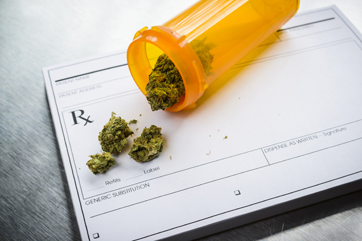Many unknowns surround medical marijuana
NEW ORLEANS — Though physicians in more than two dozen states, Washington, D.C., Puerto Rico and Guam have laws that allow medical marijuana’s use, there is still a lot of uncertainty over its medicinal value, according to a speaker at the ACP Internal Medicine Annual Meeting.
“There are very little scientific data to support the approximately 50 indications where medical marijuana could be used in the 29 states where marijuana is legal,” Charles V. Pollack, Jr., MA. MD, director of The Lambert Center for the Study of Medicinal Cannabis and Hemp at Thomas Jefferson University in Philadelphia told Healio Family Medicine.
Obtaining data that would unlock the full medical potential of marijuana has a major roadblock, he said.
“The classification of marijuana as a Schedule I drug by the Drug Enforcement Agency makes it logistically and financially very challenging to do the type of rigorous testing that most physicians have come to expect before they start suggesting a certain therapy for their chronically ill and difficult patients.”
There is currently “reasonably good data” to recommend marijuana as treatment for seizure syndromes in children, neuropathic pain, and multiple sclerosis, Pollack said.
“The biggest worry we have for those conditions is that in marijuana-naive patients, too high of a concentration of a tetrahydrocannabinol level could lead to adverse effects. But so long as we start slow, and let the patient titrate up, it’s not unreasonable to try it.”
There is a disconnect between hype, hope and science when it comes to medicinal marijuana uses, he added.
“You can go into Google and type any disease you want and add the word marijuana and find fantabulous case reports that talk of people being cured by medical cannabis. The receptor system where it works is widely spread throughout much of the body, so there is a lot of potential therapeutic impact for cannabinoid in lots of disease states, and we have anecdotal evidence from patients who report a lot of relief, but we don’t have the good scientific data to back up these claims,” he said.
There is still no clear-cut answer for what advice to give in non-neurological situations, Pollack said.
“It is still a leap of faith for physicians to recommend medicinal marijuana. [Primary care physicians and internists] have to balance the facts with the patients who are really, really wanting to get it.”

He recommended either The Health Effects of Cannabis and Cannabinoids: The Current State of Evidence and Recommendations for Research published last year by the National Academy of Science and Engineering in Medicine, or the website of The Lambert Center for the Study of Medicinal Cannabis and Hemp at Thomas Jefferson University as resources for clinicians who wish to stay up to date on regulations regarding marijuana and its medical potential. – by Janel Miller
References :
Pollack C. Marijuana: Its roles, rewards, and risks. Presented at: American College of Physicians Internal Medicine Meeting; April 17-21, 2018; New Orleans.
Disclosure: Pollack reports being a consultant for Boehringer Ingelheim, BMS/Pfizer, and Portola, receiving honorariums from BMS/Pfizer, Boehringer Ingelheim; and receiving research contracts and grants from Astra Zeneca, Boehringer Ingelheim, CSL Behring, DSI, Janssen, Pharma, and Portola.

